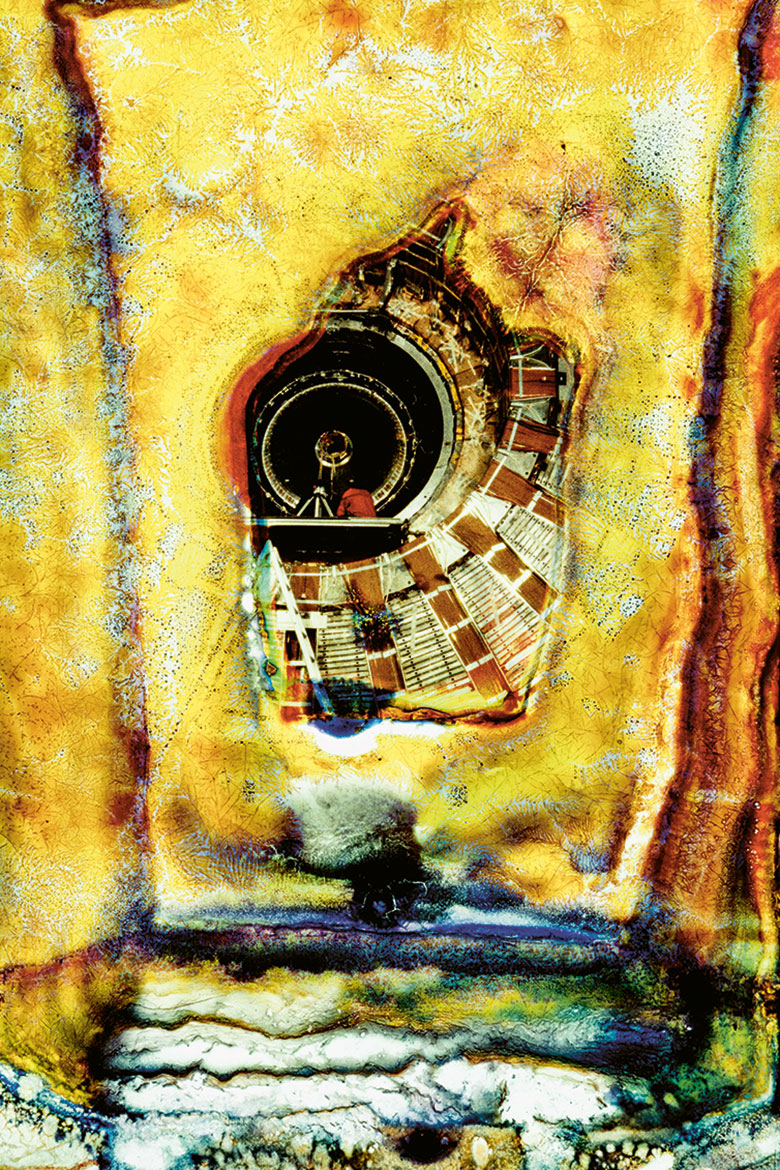IN IMAGES
The abstract beauty of memory guzzlers
A slide, forgotten for thirty years, has been beautifully colonised by micro-organisms.

A slide from CERN that lay forgotten and decaying for 30 years has become an eye-catcher. | Photo: Jean-Yves Le Meur
Of the 450,000 or so slides held at CERN, about 100 have escaped storage and have therefore been inadequately protected. This image shows the remains of a slide that has spent 30 years in the open air of a warehouse prior to being discovered by the physicist Matteo Volpi and his colleague Jean-Yves Le Meur, who is responsible for the digital archiving of CERN’s photographs. Micro-organisms in the environment had done their work in the meantime, says Le Meur, who sought to understand why the slide was so badly degraded.
“Thanks to the powerful microscopes we have to hand, we were able to determine the material still present on this slide and compare it with that of a properly preserved slide”, he says. “We have identified the biological process at work: micro-organisms make the colours of the slide disappear by feeding on the gelatine of the film, which is actually there to hold onto the colours. They send enzymes into the film and then reabsorb them. You can see that certain paths have been favoured by the micro-organisms: where the film is white, the colours have already been completely consumed.
Fortunately, a small fragment of the original image remains intact, showing the central cylinder of the DELPHI detector of CERN’s Large Electron–Positron Collider (LEP), which operated from 1989 to 2000, and a scientist taking measurements in front of it.
The fragment gives the viewer the impression that he or she is looking through a telescope at someone who is looking through a telescope. “What I find fascinating is that this is a machine that is actually used to observe the infinitely small”, says Le Meur. Even more fascinating still is the encounter between particle physics and biology and the illustration of a process that is gradually transforming CERN’s memory into works of art. This slide was saved just in time from being swallowed up.




